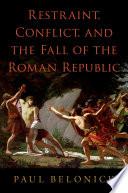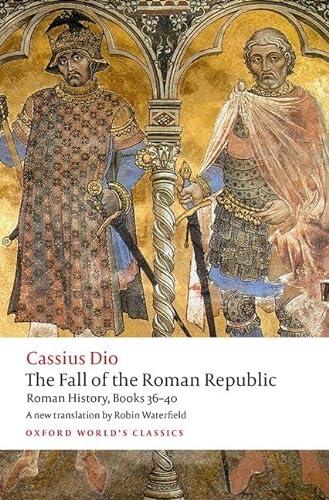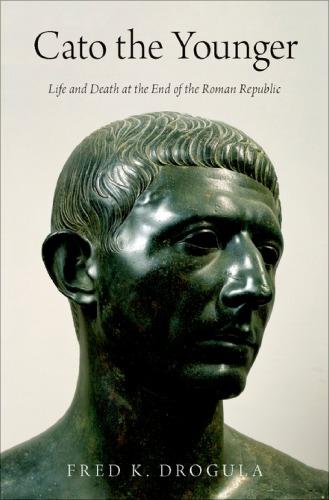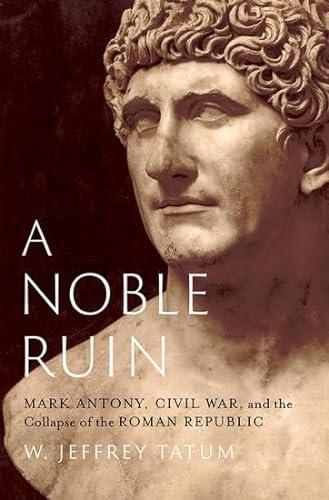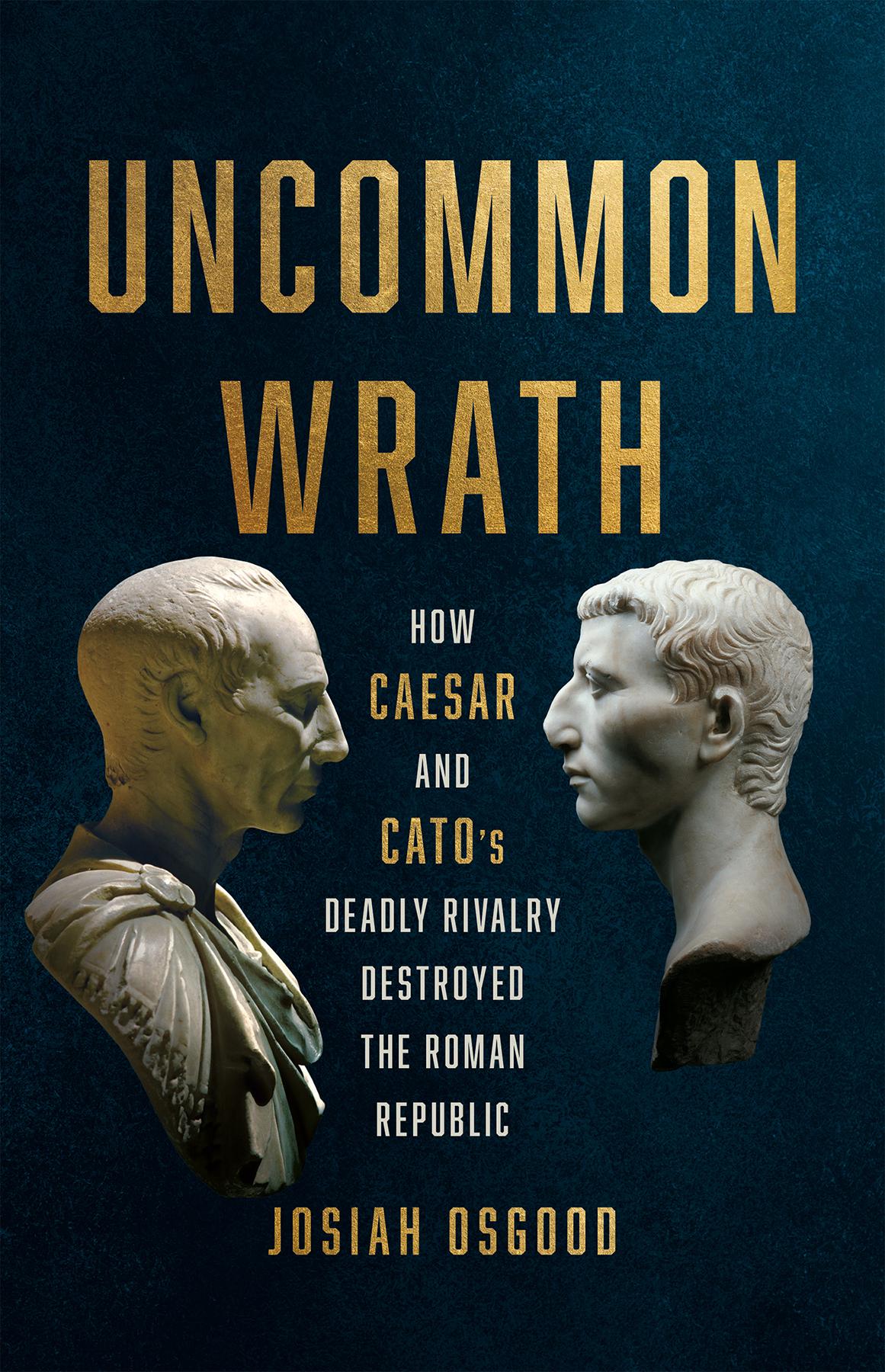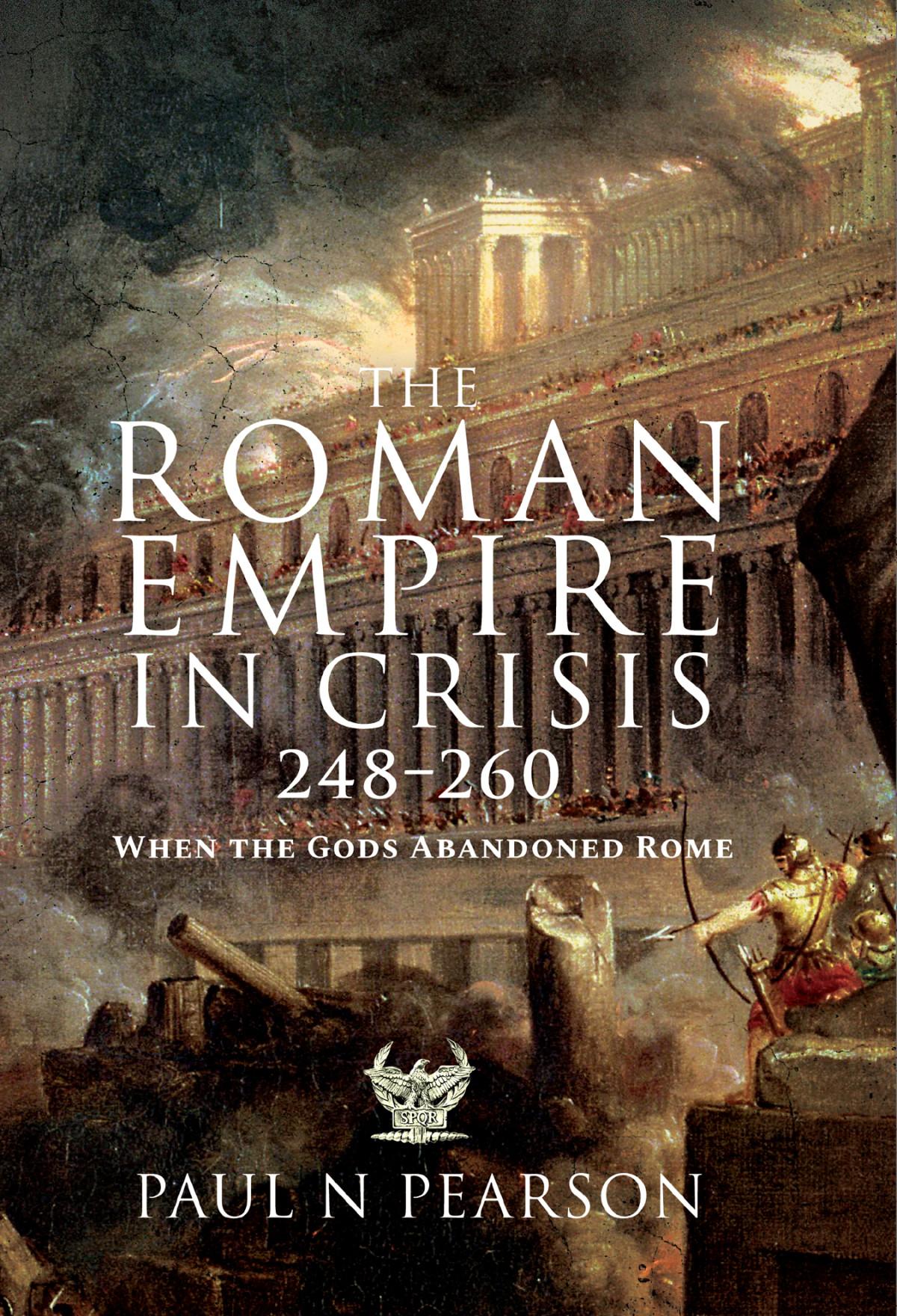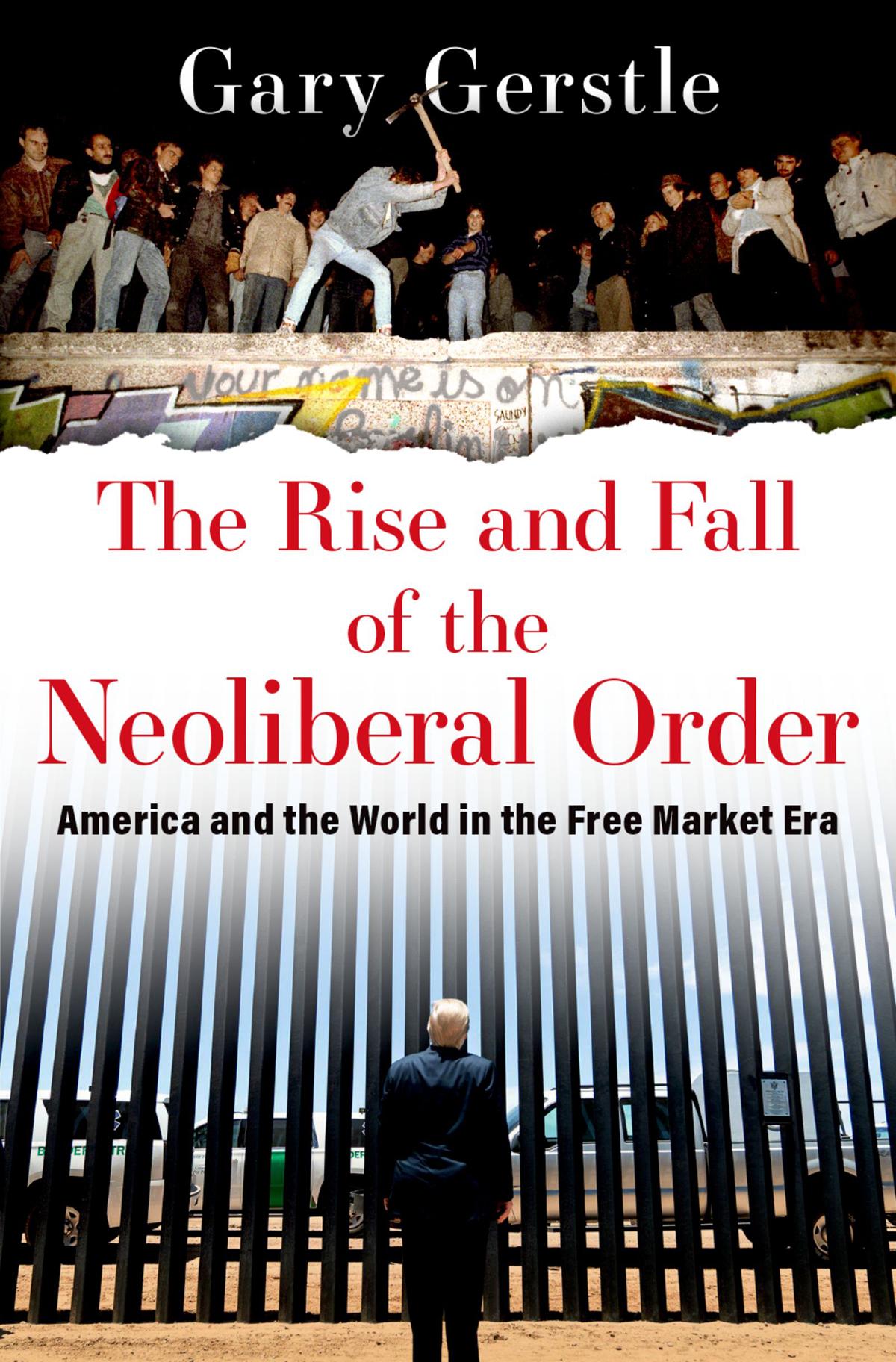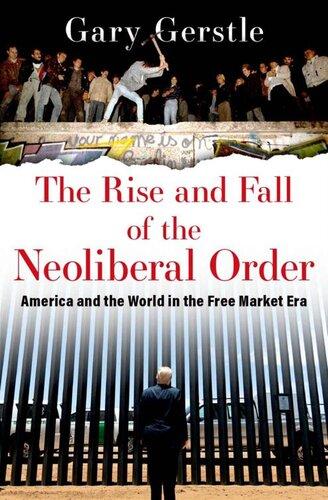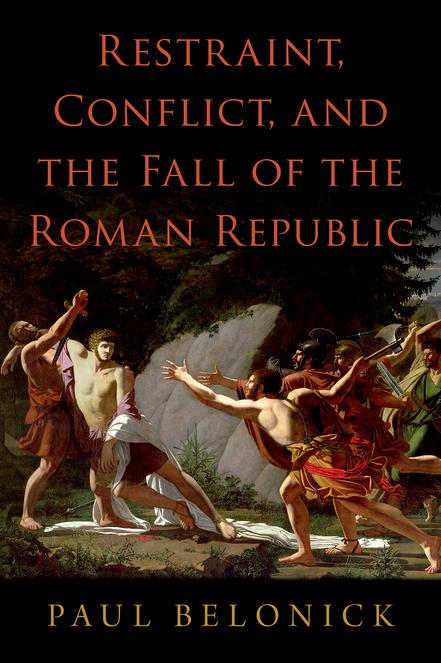Introduction
In June 43 BC, an anxious Cicero wrote to his friend Brutus. Julius Caesar was dead at Brutus’ hand, but civil war continued, while an “internal disease” in the Republic “grew more severe daily.” Young Octavian—the future Emperor Augustus, by now styling himself “Caesar” after his assassinated great-uncle— seemed prey to a frightening desire for power, and the city was restive. And so Cicero feared for the Republic: it should have been immortal, he lamented, but was not, because nothing inhibited insolent would-be despots from demanding as much as they had the power to take:
Neither reason (ratio), nor moderation (modus), nor law (lex), nor custom (mos), nor duty has any strength, nor do the judgment and esteem of the citizenry (existimatio civium), nor shame (verecundia) at what posterity will think.
To Cicero, these forces of restraint normally prevented ambitious men from disrupting the state. In his eyes, they were failing, and res publica with them.1
Some decades later, Livy portrayed the abuses of the last Roman king, Tarquin the Proud. According to the legend, Tarquin had his predecessor, King Servius Tullius, assassinated, while mocking him as the son of a slave then denying him proper burial. Tarquin put to death eminent senators who grew too popular, and refused to appoint replacements so that, as Livy put it, the Senate “might become more contemptible for its very smallness, and then less indignant at being ignored.” He broke the tradition of taking the advice of the Senate and made treaties without collaborating with either the Senate or the People. He tried all legal cases without advice and judged as he pleased so he could steal the accused’s goods. His own children could not tolerate his superbia his arrogance toward others. Resistance to him ignited into revolution.2
The extent to which Livy related any history here or just pure folktale is hotly debated, but at all events the portrait demonstrated that a good republican Roman must be what the Tarquin of fable was not—and Tarquin’s traits were the
1 Cic. ad Brut. 1.10.1: ingravescit enim in dies intestinum malum, 1.10.3: non ratio non modus non lex non mos non officium valet non iudicium non existimatio civium non posteritatis verecundia, 1.10.5.
2 Livy 1.48, 1.49.5, 1.49.6: quo contemptior paucitate ipsa ordo esset, minusque per se nihil agi indignarentur, 1.49.7, 1.54.1. Cf. Cic. de Rep. 2.45; Dio 2.10.1 (Zon. 7.9).
Restraint, Conflict, and the Fall of the Roman Republic. Paul Belonick, Oxford University Press. © Oxford University Press 2023. DOI: 10.1093/oso/9780197662663.003.0001
precise inverse of Cicero’s list to Brutus. Tarquin displayed no respect for custom, no moderation, no shame. His contempt for Senate and citizenry lacked care for the opinion of others or respect for his office. His refusal to show deference to senators and commons alike was intemperate. He lacked any self-control and dripped avarice. His own posterity hated his arrogance. His sobriquet said it all.3
One hundred and sixty years after Livy, the Alexandrian historian Appian wrote of Lucius Cornelius Sulla’s bloody march on Rome against his countrymen in 88 BC to “free her,” in Sulla’s reasoning, “from tyrants.” Although rivalries had long been common in the Republic, there had never been such widespread and sickening violence as that which followed. Why this time? Appian answered: “There was no longer restraint on violence either from a sense of shame, or from the laws, or from civil institutions, or from love of country.” Elsewhere he added “reputation,” and “respect for office-holding status” to the list of absent values that led to discord and murder—items parallel to Cicero’s “opinion of the citizenry” and to deference.4
The commonality of these opinions is not surprising to anyone familiar with the ancient sources on the Roman Republic, both Greek and Roman, contemporary and late, and particularly those writing in or about its well-documented last century. The sources are filled with endless worry about failing “morals” and lost self-control, moderation, modesty, temperance, and shame. Separated by decades or centuries, and describing times even more diverse, myriad authors shared a common theory: a functional Republic required citizens who displayed vigilant personal self-control, moderation, and deference to others.
This ubiquitous commonality, however, calls for explanation, particularly because self-restraint is the seeming opposite of another fundamental cultural feature of the Roman Republic: keen self-advancement. Historians now generally accept that Roman ascendance was attributable to the uncommonly ravenous competitiveness of the Roman aristocracy—those few members of Roman society whose families achieved high offices and military commands—with their enemies, ancestors, and among themselves. From early youth a Roman noble boy was taught to be the best of all his peers and better than his forbears. The walls of his home displayed the wax funeral masks of his relatives and the spoils of their victories, labeled with their magnificent deeds, while he was exhorted at funerals to surpass the dead man’s achievements. The climax of the competition for self-promotion was the triumph, in which a victorious commander dressed as Jupiter—a god for a day. Empire flowed from this competition as Roman elites
3 Cf. Dunkel (1971) 19; Hammar (2013) 166.
4 App. B.C. 1.4.33:
sought to win dignitas (“standing” or “esteem”) and high electoral offices through successful conquests in Italy, then the Mediterranean, then beyond.5
Modern historians, particularly in the last few decades, have modeled this competition’s interplay with Roman culture and politics. Power in ancient Rome, as scholars now realize, was not so much a matter of “institutions” or “structures” as it was a more fluid, semiformal social arrangement, a kind of “performativecompetitive politics” mediated through acts of public display, ceremonies, and spectacles that placed rulers and ruled into a framework of reciprocal relations through shared symbolic practices and public exchanges of praise and votes. Aristocrats held power and influence because they competed to win public symbolic capital—victories, reputation, offices, family histories—possession of which gave them the traditional right to control the government, which gave them further symbolic capital. The formal structures and offices of the Republic, too, were shored up by performative-competitive, symbolic cultural features: aristocrats contending for office in public speeches, canvassing about with visibly large crowds of clients in their wake, and so on. Competition also helps explain the Republic’s governing structures (e.g., its hierarchies of offices), its rigid social stratifications, and even the aristocracy’s interactions with the common People, who participated in the performative-competitive Roman political system by judging the competition among the elite with their votes, cheers, or hisses.6
What role could that ubiquitous commonality of self-restraint play in such a competitive framework? Unfortunately, modern analyses are still lacking, largely because modern historians have been (correctly) chary of swallowing whole the Romans’ own thesis that their society collapsed because of lost “morals.” That concern long made it unfashionable (at best) to suggest that Roman politics and Roman plaints over “morality” had much to do with each other. Accordingly, scholars of Rome saw those ubiquitous references to self-restraint as a mere literary trope, rhetorical platitude, or philosophical nicety, “a tedious commonplace, whose literary history may be traced by the zealous but whose frequent
5 Polyb. 6.53; Sall. B.J. 1.4.5–6; Pliny, N.H. 35.6; Flaig (1993) 199–200; Wiseman (1994) 98–102; Flower (1996); Beard (2003); Hölkeskamp (2010) 112–115; Covino (2011) 74; Mouritsen (2017) 96–104; Beck (2018).
6 The literature on performative politics has ballooned since the mid-1990s, and now generally analyzes the People’s key role in it as well: e.g., Bernstein (1978) 195; Millar (1984) 10–14; Develin (1985) 55, (2005); Rosenstein (1990) 154, (2006); Flaig (1993), (1995); Lintott (1994) 10–15, 45–46; Meier (1995) 12; Hölkeskamp (1993), (2006) 364, (2009) 8–9, (2010) 1–5, 16, 56–60, 109–124, (2011a) 162, (2011b) 26–30, (2013); David (2000) 29–30; Martin (2002) 167–171; Sumi (2005); Jehne (2005); Patterson (2006) 346–350; McDonnell (2006) 185–195; Pittinger (2008); Wiseman (2009); Lundgreen (2011) 260; Morstein-Marx (2011) 272; Steel (2013) 42–46, 51–53; Hammar (2013) 87–92; Flower (2014); Harris (2016) 37–40; Gruen (2017) 559; Yakobson (2006), (2017), (2018); RosilloLópez (2017); Tiersch (2018) 39. On the theory of social capital see Bourdieu (1991) 192, (1993b) 162–163.
recurrence requires no real explanation.”7 The unhappy effect has been largely to jettison “morals” from comprehensive analyses of Roman culture, history, and politics.
Nearly thirty years ago, Catherine Edwards rightly challenged that view, arguing that aristocratic attacks on the perceived immorality or prodigality of other aristocrats were a social marker, “implicated in defining what it meant to be a member of the Roman elite, in excluding outsiders from this powerful and privileged group and in controlling insiders,” with perhaps some small additional practical benefits of enforcing hierarchy and discouraging elites from losing their status by frittering away their means.8 Some historians have since taken the thought further, arguing that moralizing was an “arbitrary” way for the elite to justify its privileged social position and to seem grave and “responsible.”9 In time, aspects of Roman self-control have come under expanded inquiry, including fine semantic and single-word lexicographical studies on concepts such as shame, virtus, and frugalitas. And, in a refreshing trend, scholars have also recently begun investigating how social values were expected to exercise real power in Rome, especially through oratory.10
Still, despite much good work, the advances since Edwards’ efforts that scholars have made in modeling the performative-competitive system invite us to combine these trends and to update and rethink holistically what work the range of concepts relating to self-control did in Roman society, why the Romans seemed so paradoxically obsessed with self-restraint within a competitive schema, how self-control interlocked with aristocratic competition and with other aspects of Roman performative politics, and what difference it made to their history. This book aims to make three contributions on these lines.
First, to show how Rome’s political structures and its performative politics were deeply shaped by values of self-restraint. Performative competition alone cannot fully describe the Republic’s operation. The society would have collapsed into fratricidal chaos almost immediately if everything were nothing but constant war of all against all. The development of the republican system of limited, iterative, and collegial elective office-holding was a partial salve to chaos. Indeed, we can conceive of the Republic as a system that organized the competition for the distribution of honors, allocating competitive offices and other
7 Edwards (1993) 176, citing numerous scholarly examples. Cf. Henry (1937) 27–28; Pelling (1995) 206; Wallace-Hadrill (2008) 319.
8 Edwards (1993) 11–12, 138, 175–180.
9 David (2000) 23; Hölkeskamp (2006), (2017); Reay (2005) 352; Hammar (2013) 109. On the cultural “arbitrary,” an intrinsically valueless thing that acts as a valued social marker, see Bourdieu and Passeron (1977) 8; Edwards (1993) 4, 26.
10 E.g., Burck (1951) 167–174; Hellegouarc’h (1963); Dieter (1967); d’Agostino (1969); Viparelli Santangelo (1976); Militerni Della Morte (1980); Moore (1989); Scheidle (1993); Lintott (1994) 49; Perruchio (2005); Kaster (1999), (2005); Thomas (2007); Tatum (2011); Hammar (2013); Balmaceda (2017); Vervaet (2017); David (2017); Roller (2018); Gildenhard and Viglietti (2020).
prizes according to an electoral process based on generally acknowledged merit, which was usually determined by an admixture of military success, wealth honestly gained, family history, and speaking ability. The system also gave the People a consistent stake in its operation, which lent it stability, as did the shared performative and symbolic cultural features just mentioned.
Even so, the republican system was no cure-all: it was ad hoc, unwritten, subject to formalized legislative rules only astoundingly late in its progression, and riddled with unpredictable accretions and exceptions, while its connection to performative power placed it in constant danger from the Roman competitiveness entangled with it. The Romans were habitually anxious that a single man might—even by genuinely exceptional merit—raise himself so far above his fellows as to deprive everyone else of their chances at glory. Naturally, too, ambitious individuals might “cheat” to win, while excessive rivalry and personal feuds could disrupt the system as well. And in the end, of course, the system and its structures failed utterly to contain the competition as the Republic devolved into civil wars.11
Nevertheless, in the face of these omnipresent dangers, the Romans managed to run a Republic for more than four hundred and fifty years. What kept the system cohesive, and for so long? Why, at last, did this finely tuned social structure collapse, and why did that collapse come when it did? Even as our modeling of the performative-competitive system has improved, these questions remain stubbornly unanswered. Something is still missing from the performativecompetitive analytical models.12
This book argues that a set of Roman values of self-control provides vital missing pieces to those questions, and, by bringing those missing pieces into the analytical fold, bolsters the modern models. A vast array of ancient Roman authors used words such as pudor, verecundia, existimatio, modus, moderatio, modestia, and temperantia (and many adjacent concepts) with uncanny frequency to express moderating values of self-control. Greek historians noticed these values at work in Roman society as well, and used words such as αἰδώς, δόξα, μετριότης, ἐπιείκεια, εὐταξία, and σωφροσύνη to approximate the Roman concepts.13 Most important, even when the ancient authors did not overtly use the words themselves, the mindsets and actions that the words expressed appeared regularly in the authors’ descriptions of historical events and of their subjects’ patterns of behavior.
I will call these concepts and patterns of behavior collectively “restraint values” or “restraint norms,” which made up a restraint-permeated habitus, in
11 Cf. Beck (2016).
12 Cf. Morstein-Marx and Rosenstein (2006) 634–635; Mouritsen (2017) 105.
13 TLL 8 1205, 1220–1221; V,2 Fasc. X 1512; X,2 Fasc. XVI 2492. On the Greek terms see North (1966); Cairns (1993); Rademaker (2005).
the sense of sociologist Pierre Bourdieu: an immersive social context, presumed to be self-evidently correct and that becomes unconscious second nature, that deeply valued self-control, and that affected how Roman men thought and acted. Together, I argue, these restraint values and their habitus were moderating social factors that acted as meta-rules for running the republican competition, permitting the system to continue along intelligible lines, and legitimizing competitive self-assertion and claims to power.14
As such, Roman restraint values were more than just “arbitrary” social markers of the elite in-group and were not mere personal ethical values or empty rhetoric. Rather, one of this book’s central contentions is that restraint values had positive political content that the Romans believed requisite to res publica’s health. Such values were prized because they undergirded and regulated the peculiar, unwritten republican system and its semiformal structures. Without restraint, dignitas (whence came power and influence) was considered overbearing and unjust, even if given by law or election. Restraint therefore validated power in the fluid republican framework. Moreover, the values encouraged respect for the competition’s validity and helped to inform everyone how to compete and act, and to whom to defer and whom to obey. The values aided Roman aristocrats’ understanding of the system’s rules, and created a sense of cohesion among the aristocracy and People when acknowledging the “winners” in the competition, which also legitimized the competitive “game.” And because the republican system was so interlaced with performative symbolism, Roman men were expected to display the values publicly, and did so—sometimes spectacularly— even competing in exhibiting them, for which they were duly rewarded by both peers and the common People (who also expected their rulers to display these values) with praise and electoral success. Hence, the symbolic capital that men gained in the competition by display of the values advanced the kind of men willing and able to maintain the system.15
Accordingly, the values did not curb competition entirely, but regulated it: if everyone understood and followed constraining rules, the ruling elite could theoretically keep competing among themselves and passing around honors and offices indefinitely with reasonable assurance that relative merit—and not violence, bribery, or other undesirable methods—would determine to whom the prizes would be acceptably distributed. The competition would therefore have meaning; in that sense, restraint complemented competition, and thus legitimized the exercise of republican power.
14 Bourdieu and Passeron (1977) 8; Bourdieu (1993b) 5; Lundgreen (2011) 34. For norms as unwritten behavioral expectations, see Bruhns (2017); Humm (2017) 301–302; Lundgreen (2017) 18; Roller (2018) 8 n.10.
15 Cf. Millar (1986) 4; Hölkeskamp (2006), (2014b) 44, (2017); Morstein-Marx (2011) 272; van Wees (2011) 3; Hurlet (2012) 27–32, 38.
To be clear: this is not to say that there was ever some golden age of “moral” self-control. Romans, being human, always had disagreements, sometimes strident, throughout the Republic’s history. Behavioral norms were constantly contested, as we will see. But that process of contestation does not mean that normative behavior was nonexistent, or not respected. Rather, contestation could strengthen norms as disputes over proper behavior were resolved, the actors praised or punished, and the contested incident commemorated for consumption by the peer group and their descendants. Thus, for much of the republican period, and particularly after the aristocracy formed in the late 300s into what has been called the “new nobility,” the norms congealed through contestation, waxing rather than (as later Romans supposed) ever-waning, until by the third and into the second century BC the habitus settled reasonably well into place, and a critical mass of aristocrats was generally capable of managing by consensus and norms the tension between self-advancement and self-restraint, and of containing would-be miscreants nonviolently through restraint mechanisms.16
In sum, norms of personal self-restraint were a sine qua non of the performative Roman political system–cum–aristocratic competition. That—and not the values’ role in elite self-definition alone or as literary niceties or oratorical commonplaces—explains why the Romans were so preoccupied with them. In this way this study unifies analytical models of performative competition for personal self-advancement with the Republic’s endless harping on personal self-restraint.
The book’s second contribution is to apply restraint to the arc of Roman history through several focused analyses and sustained historical narratives. This method reveals how restraint influenced specific social contexts and long trends within which individuals made their decisions, and brings new insights to much-examined cases. Most important, it follows the primary (if not sole) social perspective—“Is this actor properly restrained or not?”—through which the Romans themselves judged action, and thus sensitizes us to their own decisionmaking and reactions to events in real time (what Karl-Joachin Hölkeskamp has invited as a study of historical “microprocesses”). Hence, the values will take their proper place as historical causal forces in their own right.17
The third contribution is to combine these observations into the book’s main thesis: that restraint norms were central to the Republic’s disintegration—but not in some crude linear deterioration from good mores to evil, as so many late, moralizing Roman authors imagined. Rather, because restraint norms were
16 Cf. Morstein-Marx and Rosenstein (2006) 634–635; Lundgreen (2011) 14, 23–24, 118, 279, 282–284, 302; Passet (2020) 192.
17 Cf. Earl (1967) 17; Corbeill (1996) 24; Wallace-Hadrill (1997) 9: the “main, indeed the only, Roman theory of the fall of the Republic is, in our terms, a cultural one: of the corruption of mores”; Jehne (2009) 12–15; Hammar (2013) 180; Hölkeskamp (2014b) 43–44.
principles integral to the competitive system, they became corrosive flashpoints of conflict when, in time and in shifting contexts, they came up for hot debate.
The process was fourfold: (1) Just as noble Roman boys had “be the best” drummed into their heads from birth, so too countless exempla, speeches, poems, plays, and other lessons also conditioned into them the principle that self-restraint, deference, and consensus were self-evidently correct behavior indispensable to the prime directive of maintaining legitimate republican governance. The restraint values, though, were behavioral norms, and could never be more than outlined, passed down more through general exempla and such than through systematic definition.18 (2) Because the restraints were normatively forceful but unavoidably subject to dispute, serious conflicts arose about their practice in novel circumstances as the Republic moved through time. The Romans attempted to use restraint norms to determine winners in these conflicts and to delineate legitimate exercises of power. (3) Such conflicts about normative behavior required judges to mediate them, judges who—selfreferentially—needed to be seen by the disputants as normatively acceptable for their judgments to merit deference. The very judges of normative behavior, however, became in time normatively questionable figures amid the conflicts. (4) At which point, as a series of factors converged (described in Chapters 4 and 5), the conflicts became unjudgable and intractable. But because the Romans had tightly linked “proper” restraint with legitimate participation in the republican competition, the unresolved turmoil in restraint led to turmoil in political legitimacy, while the nobility’s conditioning kindled ever hotter emotion at intractable perceived deviance. That turmoil and emotion led to increasing mistrust that “regular” republican institutions were sufficient to contain illegitimate “deviants,” compromise with “deviants” being imagined as treason to the prime directive, dehumanization, and then violence, until the normally restrained republican competition turned into unrestrained conflict.
In short, the Roman aristocratic consensus was formed and then cracked along axes of personal self-restraint. Not because the norms were objectively forsaken (as a forlorn Cicero or Sallust or Livy might interpret events), or because aristocrats collectively defied their conditioning, but ironically because the values remained to the very end of the Republic normatively desirable, essential to the competition, and emotionally gripping. We will see not a neat dichotomy of restrained and unrestrained persons—the former looking on aghast as the latter destroyed the Republic—but rather a tangle of arguments, with a surfeit
18 Cf. Lundgreen (2017) 20, 27; Badel (2017) 551–552. On aristocratic education and the formation of a habitus, see Eyre (1963) 47–48; Bonner (1977); Bourdieu and Passeron (1977) 8; Wiseman (1989), (2000); Harker et al. (1990) 16; Bourdieu (1993b) 5; Habinek (1998); Corbeill (2001) 263-266, (2007); Flaig (2003); Forsythe (2005) 294–295; Billows (2009) 35; Gildenhard (2010); Lundgreen (2011) 33–34; Scholz (2011); Roller (2018) 9.
of emotion. Opponents all claimed themselves as restrained (which explains the values’ omnipresence in the sources) even as divided audiences became ever more unable to form a normatively acceptable critical mass able to adjudicate contested behavior conclusively or to cow “bad” actors into submission (which explains the sources’ persistent, if always one-sided, lamenting that “morals” had become lost). As restraint came into impassioned dispute, it weakened determinations of republican legitimacy tied to it and also the guiding meta-rules within the performative-competitive system, and begat violence against competitors perceived as desecrating normative principles believed indispensable to the Republic’s well-being—competitors who thus became mortal enemies to be eradicated.19
The book is divided into two parts. Part I, “Values, Terms, and Patterns,” sets the baseline, exploring the restraint values in three chapters. Chapter 1, “Shame, Respect, and Deference,” describes the norm of deference, not merely to superiors, but to peers, colleagues, and groups of peers; a deference undergirded by social conventions of shame and care for one’s reputation that could act more strongly on an aristocrat even than military necessity or threat of force.
Chapter 2, “Moderatio, Modestia, and Temperantia,” examines “moderation” and “temperance.” A principal argument is that the same values meant to restrain a man against luxury and lust were also meant to restrain him in relations with peers and in government, with no alteration in social operation. That point helps to explain the ancient sources’ constant carping about the evils of “luxury.” The first two chapters together conclude that this cluster of restraint values was generally agreed upon and followed, that Roman aristocrats competed in their practice, and that the values supported the republican system. Both of these chapters primarily use the works of later ancient historians (filled out with contemporary sources where available), for the simple reason that such writers provide the fullest picture of how these restraint values were ideally to operate.
Chapter 3, “Setting Norms,” addresses the objection that restraint in the late historians—almost none of whom wrote during the Republic’s lifetime—was little more than literary license, retrojection, regurgitated Greek philosophy, or pure nostalgia. The chapter serves three functions: first, to attempt (given the paucity of contemporary evidence from early times) to place the restraint values into Rome’s republican past by using exclusively sources and fragments contemporary with the action; second, to postulate the restraint norms’ provenance and path until the last half of the second century BC; and third, to situate the observations of the first two chapters into modern scholarly models of how the Republic functioned.
19 Cf. Wallace-Hadrill (1997) 11; Hölkeskamp (2006) 383, (2014b) 45.
Part II then follows the values through “Restraint, Conflict, and Collapse.”
Chapter 4 re-examines the tribunate of Tiberius Gracchus in the light of the restraint norms, showing how Gracchus’ quarrel with his colleague and Gracchus’ murder were, paradoxically, products of the restraint values and set in motion long-term changes to the values’ operation. Chapter 5, “Uncertainty,” shows how the restraint values became highly disputed in the following decades, particularly with respect to the Senate’s and People’s traditional roles as judges of normative behavior, and how the contests ushered in hitherto unknown levels of violence.
Chapter 6, “Cataclysm,” locates within that unstable long trend the clash between Marius and Sulla, which deeply sapped normative behavior’s ability ever afterwards to set reliable expectations for peaceable inter-peer relations.
Chapter 7, “The Lost Generation of the Republic,”20 follows the actors of the 60s to the 40s bc, who inherited a veneer of structural integrity that concealed highly confused understandings of normative behavior, expressed in a vast array of approaches to restraint. This volatile social context shaped the generation’s decision-making and emotions and heightened their conflicts, rendering them helpless to resolve peaceably amongst themselves what shame, moderation, and consensus should mean, even as they clung to the profound conviction that these values must somehow be upheld for the sake of the Republic. Finally, Chapter 8, “Restraint as Accelerator,” assesses in a close reading how in the final crisis of 50–49 BC all the major players were driven by irreconcilable visions of restraintbased legitimacy, for which no body of peers or the People themselves could provide a definitive, acceptable verdict. The violence that followed at last snuffed out the republican system. A short epilogue touches on restraint in Augustus’ “restored” polity, and concludes.
Two last points before we begin. First, because this book argues that the habitus of restraint had causal power, we will encounter the age-old problem of reading motivations from ancient sources. Of course, we cannot peer into the mind of any given ancient individual to see what he “really” believed about restraint or the extent to which it was driving his actions. It may be tempting, too, to see restraint values as “just” rhetoric or propaganda glossing over the Republic’s “real” social or economic issues.
But the constant repetition of restraint values should suggest that they had a general behavioral effect on Roman society—as though the Romans collectively and constantly talked about restraint without anyone ever believing a single word of it or acting on it. Rather, the way people speak and think about a problem can, in fact, drive decision-making, and can be studied. Rhetoric and propaganda are themselves historical and cultural forces that shape human reactions to circumstances—often, for instance, sharpening generalized social or
20 The title, of course, points to and challenges Erich Gruen’s famous (1974).
economic discontent into violent anger at specific human targets. They are also historical and cultural data that tell us what a particular culture cares enough about to get enraged over.
More so, the magnitude, consistency, and timing of shifts in norms relative to social and political changes, as well as much primary evidence that directly connects norms to decisions, will strongly suggest that restraint norms repeatedly prompted action. We will see material and economic developments especially shaped through the habitus of restraint. We will also see quick, vivid physical actions and reactions in line with restraint, which also imply true internalization. Some Romans, too, surely fell into the cognitive bias of believing in restraint when it was personally useful; the human mind, after all, is exquisitely adept at holding fervent beliefs that happen to support what it wants. But the use of restraint as a viable strategy to support one’s desires only shows that even if some people enacted restraint while secretly completely disbelieving in it or having some other motives, they evidently expected that their audience believed in it and would justify them on that basis—which also shows a baseline power of the norms and, simultaneously, contestation over them. So even if we cannot perfectly know what motivated a given person in a given instant, we still can, taking the evidence as a whole, trace restraint’s path through group cohesion and then crackup, and reveal restraint as a causal force. The direction of causation between changes to restraint norms and social, economic, and political forces will be multivariate, of course, and I will expressly argue that restraint and social change acted as feedback loops on each other.
Finally, it has been wisely said that “most of us can only follow one or two threads of the web; which is reasonable and useful, provided we do not claim that we have found the answer” or suggest that our thread is the “only one that matters.”21 This study aims to follow a particular thread of some critical social restraints on aristocratic competition through the Romans’ history, not to create an exhaustive list of every possible restraining impulse that the Roman aristocracy used. Some restraints, like law, require their own comprehensive studies and can be touched on only lightly here. Nor will I pretend that the Republic’s operation and dissolution hinged on one monocausal factor alone. Rather, I will show how the habitus of restraint intersected with numerous other historical trends, forces, and even accidents that shaped Republican history. All the same, I will intentionally keep a tight focus on the thread of restraint to illuminate primarily this long-inadequately understood factor in Roman politics and culture. To the extent that the inquiry adds something to other threads and questions, though, I hope it is in a “reasonable and useful” way.
21 Badian (1972b) 55.
1 Shame, Respect, and Deference
Cicero and Appian believed that “the judgment and opinion of the citizenry,” respect for “office-holding status,” “shame,” and “reputation” should have restrained men from committing evil against the commonwealth—but were failing.1 How did these values constrain the Roman aristocratic competition?
First, office-holding status and reputation created social hierarchy, and the Romans expected everyone to defer to their betters. That is an unoriginal observation, of course. Far more important, the Roman nobility also expected peers, and especially colleagues in office, to cede to each other in an exercise of mutual deference—even though peers and colleagues were also natural rivals in competition.
The significance of this restraint value of deference to peer and colleague can scarcely be overstated. Roman aristocrats are repeatedly portrayed in the ancient sources exhibiting a conviction that mutual accord—and not antagonistic checks and balances—defined the ideal collegial or interpeer relationship.2 A willful aristocrat could especially be overborne by a display of solidarity of a group of peers or colleagues, and particularly when the Senate, the greatest conglomerate of dignified men, acted in concert. Indeed, a collection of peers could pressure a Roman aristocrat even more than fear of enemies, physical force, or threat of death. This norm of deference was closely tied to inhibitory emotions to which the Romans gave the names pudor and verecundia, a “sense of shame,” whence came “respect” for others, which were in turn related to the concern a Roman had for his existimatio, his “sense of worth” in the eyes of others. Additionally, the rewards or punishments respectively associated with proper deference or with shameless disregard for the “judgment and opinion” of one’s fellows cemented the values’ symbolic capital.
Of course, these restraint values might occasionally become contested and fraught. Navigating the tension between expected self-restraint and expected self-advancement was inherently difficult. It could be painful for an ambitious Roman aristocrat to submit to others. But Roman aristocrats in our sources regularly appealed to these deferential values as the primary means to settle disputes,
1 Cic. ad Brut. 1.10.3; App. B.C. 1.4.33.
2 Cf. Eckstein (1987) 324, contra are Levick (1982a) 57 and Lowrie (2010) 178 who saw only check and balance.
Restraint, Conflict, and the Fall of the Roman Republic. Paul Belonick, Oxford University Press. © Oxford University Press 2023. DOI: 10.1093/oso/9780197662663.003.0002
which shows both the values’ significance and the Romans’ deeply held assumption that the values would work.
And to what end? Ultimately, the restraint of deference underlay the cohesive functioning of republican power. The aristocracy gave influence to those who judiciously combined restraint and self-assertion. Pure advancement without restraint could not be a fully justified or legitimate “win,” but would be superbia, which would lessen dignitas and influence. The aristocracy consequently assumed that the Republic was in danger unless its members individually and collectively abided by norms of deference and were receptive to the weight of shame and the reputation, judgment, and opinion of their peers. That is why Cicero and Appian placed these qualities in their list of failing fail-safes. And that is also why Romans are described in the sources as fixated on the values. A three-episode account from Livy will begin to illustrate how the restraint value of deference informed ideal aristocratic interactions.3
Young Q. Fabius Maximus Rullianus was no mean soldier. He had distinguished himself against the mountain-dwelling Samnites, and his bravery led to advancement. When in 325 BC the Samnites once again threatened, the general L. Papirius Cursor was chosen dictator and selected Fabius for his Master of Horse. Along the march to Samnium the dictator returned to Rome to take fresh auspices, and sternly charged his subordinate Fabius to seek no battle until his return. Fabius, however, like any ambitious young Roman, was keen for fame. When he discovered that the Samnite pickets were lax, he eagerly attacked. The fight could not have gone better, and the exultant Romans gathered up the enemy’s armor and weapons in a great pile in front of Fabius, who put it to the torch. This was either to fulfill a vow to the gods or to ensure that Papirius could not claim the spoils, which was his right as the technical commander-in-chief. In a final insult, Fabius sent a dispatch of his victory directly to the Senate—and nothing to his superior.4
Papirius was furious and rushed back to the camp, faced down the angry soldiers who supported Fabius, and then ordered his lictors to bind Fabius for summary execution. Fabius escaped their grasp and hid among the men, who pleaded with Papirius to forgive; it would not do to punish a young man of such merit so harshly. They clamored to the verge of mutiny, but Papirius shouted back. The din went on until dark, when Fabius slipped out of camp and fled to Rome to appeal to the senators.5
3 On the general historicity of the following episodes see Cornell (1986) 82; Forsythe (2005) 76, 295; Oakley (2007) II 696; Cornell et al. (2013) II 93. Contra is Chaplin (2000) 111.
4 Livy 8.29.8–8.30.11; Val. Max. 2.7.8.
5 Livy 8.32.14; Val. Max. 2.7.8.
Rivalry for glory first embroiled the army and now perturbed the Senate. Fabius had barely begun to make his defense in front of the fathers when Papirius followed in. As a group, the senators, including Fabius’ father M. Fabius Ambustus, entreated the dictator to put aside his anger. Ambustus, once dictator himself, decried that “neither the authority of the Senate nor my old age . . . nor the virtus and nobility of your Master of Horse”—what evidently seemed to him (or at least to the narrator Livy) to be restraints on the desires even of dictators— had any weight with Papirius. Stymied, Ambustus led the senators outside to a growing throng.6
Ambustus and Papirius then faced each other at the speaker’s platform. On the one side was the authority of the Senate and of the multitude, along with a gathering of leading men; on the other the authority of the dictator, accompanied by only a few attendants. Custom, precedent, and law supported both. Ambustus, after having submissively stepped down from the platform at Papirius’ insistence, asked Papirius to defer to the majesty of the Senate, the favor of the People, the help of the tribunes, and the memory of the absent army. Where, Papirius retorted, was respect for the Roman People who had given him dictatorial powers, or for discipline? Let Fabius off, Papirius argued, and soldier would not obey commander, and no one would have respect for men or gods. The entire Republic might then be destroyed for the young man’s licentia. 7
At this, the crowd began to beg, falling to the pavement. Fabius and Ambustus too bowed in front of Papirius and pleaded for forgiveness. Moved, Papirius declared that discipline was restored: Fabius had learned in war and peace to “submit to legitimate authority.” The People might therefore have Fabius’ life restored to them as a gift, the dictator deferring to their wishes in exchange for the show of deference to himself. The quarrel subsided—and without violence.8
Fifteen years passed. Fabius had since been consul and dictator himself, and was now consul again, and again in the field against the Samnites. Exaggerated reports had fanned rumors in Rome that the legions under Fabius’ consular colleague C. Marcius had been wiped out. The Senate, in dismay, called for a dictator to lead the counter-attack. By custom, a consul must appoint him. Marcius was feared lost, and only Fabius remained to perform the rituals to invest the man who would take from him the credit of his campaign. The Senate chose as dictator none other than L. Papirius Cursor.9
The senators were not foolish in this choice. Papirius was the foremost general of the day. But Fabius’ private enmity with Papirius caused worry. This
6 Livy 8.33.7: quando quidem . . . apud te nec auctoritas senatus nec aetas mea . . . nec virtus nobilitasque magistri equitum.
7 Livy 8.33.9-23, 8.34.1-4, although see Oakley (1997–2008) II 729.
8 Livy 8.35.7: pati legitima imperia.
9 Livy 9.38.4-9; Pina Polo (2011) 188–191 on the requirement.
appointment would not be without friction. To ensure that Fabius’ anger “would not obstruct the public good,”10 wrote Livy, the Senate decided to send an honorable “deputation of former consuls,” because, the Senate judged, they “could add their own personal auctoritas to that of the nation, and thereby convince Fabius to put aside the memory of his quarrels for the sake of the country.” The party— all Fabius’ peers and (perhaps) sometime colleagues—met with Fabius in camp and urged him to defer to their wishes.11
Silence. Fabius fixed unmoving eyes on the ground—then got up and left without a word.12 He likely pondered his choices. As consul, he might refuse to perform the rituals that would let Papirius overtake him. But the Senate had sent men of the greatest worth to plead that he cede to their and the Senate’s wishes. These particular men, moreover, had been sent precisely because the Senate expected that Fabius would weigh their opinions heavily in light of their immense dignity. And so, as was custom, in the middle of the night he prepared the sacrifice and appointed Papirius over himself as dictator. The next day the deputation learned of it and hurried into Fabius’ tent to thank him for “admirably conquering his feelings.” Silence again. Fabius bade them leave without reply. That, wrote Livy, was a “clear sign of how his singular sorrow was crushed by his great spirit.” For this act, wrote the historian Cassius Dio, he “gained the greatest glory.”13
A further fifteen years passed. There was no doubt that the now-aged Fabius would be selected to his fifth consulship, for the year 295 BC. He tried to beg off because of weakness, but “overcome by the consensus” of all he agreed, on the condition that the other consul be P. Decius Mus, his colleague in two previous consulships and censorship. Through his experiences, Livy had Fabius say, he had learned that “nothing protected the Republic more firmly than concord among colleagues.”14
These three (perhaps idealized) episodes exemplify the temptations a Roman aristocrat faced to engage in self-glorifying behavior that might interfere with the desires of his fellows, but also amply demonstrate the assumed value of deference and its emotional valences.
10 Livy 9.38.11: quae ne ira obstaret bono publico.
11 Livy 9.38.9-13: legatos ex consularium numero mittendos ad eum senatus censuit, qui sua quoque eum, non publica solum, auctoritate moverent ut memoriam simultatium patriae remitteret. Cf. Dio 8.26.
12 Livy 9.38.13-14.
13 Livy 9.38.13-14: cui cum ob animum egregie victum legati gratias agerent . . . ut appareret insignem dolorem ingenti comprimi animo. Dio 8.36.26: εὔκλειαν
14 Livy 10.22.2: vincebatur consensu, 10.22.3: expertum se nihil concordi collegio firmius ad rem publicam tuendam esse.
Deference to Superiors
Observe first the esteem for rightful grounds of Roman self-assertion. Military heroes were due respect from all, elders were due respect from youth, and men were supposed to yield to a superior in an official position. Papirius as dictator simply expected obedience and was livid when he did not receive it. The higher one climbed in the competition, the more claim one had to power and dignitas. That was a main point of the game. But the exercise of power was not a matter of naked force or official position alone. Although the threat of force could influence conflicts—Papirius had rods and axes handy—it was not here the resolving factor. The senators did not physically threaten Papirius to get their way, nor did Fabius fifteen years later face any physical hazard from the senators who visited him, nor any threat of some official “constitutional” sanction. Yet both officials gave ground in the end.
Deference to Social Equals and Colleagues
A second and more important observation helps explain why. Deference to one’s dignified peers was a powerful norm, something Christoph Lundgreen has called a “disposition of yielding.”15 Fabius ran to his consular father and to the Senate to protect him—but not for their physical strength. The aged Ambustus is portrayed as assuming instinctively that even though Papirius was within his legal rights as dictator, he might be swayed by the opinion of social peers. The Senate instinctively assumed the same of the deputation of Fabius’ peers sent to convince Fabius to appoint his hated rival dictator.
There is ample evidence that the Romans imagined that peers, and particularly colleagues in office, should show mutual deference to one another. Stories of the oldest times—which we should take at least as legends contrived to illustrate exemplary behavior—assume the ideal explicitly. When, for instance, the illustrious Camillus, the “second founder of Rome,” was voted one of six military tribunes with consular powers in 386 BC, his colleagues reportedly agreed to defer command of all pressing military affairs to him, believing that there was “no detraction from their own majesty in doing so.” The Senate enthusiastically approved, and Camillus replied that the greatest responsibility he felt came from the “deference shown him by such honored colleagues.” Then he immediately delegated powers back to them. The senators again shouted their approval: the state would never need a dictator with men in such “concord,” Livy has them say, “equally ready to command and obey,” and “adding to common praise rather
15 Lundgreen (2011) 23.
